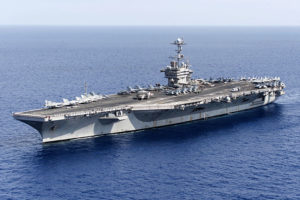3D Printing News Briefs: October 13, 2018
We’ve got business and education news galore in today’s 3D Printing News Briefs. First, Voodoo Manufacturing has launched its new Shopify app, and BeAM Machines is partnering with Empa, while Sculpteo is working with a property developer to provide 3D printed apartment models. VSHAPER has signed an agreement with educational publisher Grupa MAC, and the United Arab Emirates is introducing 3D printing into over 200 of its primary schools. The US Navy will be testing the first 3D printed ship component, and Lufthansa Technik has established a new Additive Manufacturing Center. Finally, maker Thomas Sanladerer shared on YouTube about his recent visit to the Prusa headquarters.
Voodoo Manufacturing Launches Shopify App
 This spring, high-volume 3D printing factory Voodoo Manufacturing began its full-stack manufacturing and fulfillment service for 3D printing entrepreneurs, which allows users to outsource work like quality control and assembly for their products through its easy shopfront integrations with online marketplaces like Shopify. Now, the company has launched its own Shopify app, which will allow online sellers to create and customize 3D printed products and sell them on their own Shopify stores. Once the app is installed, users can make their first product in less than 5 minutes, which is then automatically added to their store, ready for purchase.
This spring, high-volume 3D printing factory Voodoo Manufacturing began its full-stack manufacturing and fulfillment service for 3D printing entrepreneurs, which allows users to outsource work like quality control and assembly for their products through its easy shopfront integrations with online marketplaces like Shopify. Now, the company has launched its own Shopify app, which will allow online sellers to create and customize 3D printed products and sell them on their own Shopify stores. Once the app is installed, users can make their first product in less than 5 minutes, which is then automatically added to their store, ready for purchase.
“We wanted to make it ridiculously easy for ecommerce stores to diversify their product offering with 3D printed products. By applying 3D printing to the print-on-demand business model, we are opening up an infinite range of product categories for Shopify merchants,” said Max Friefeld, the Founder and CEO of Voodoo Manufacturing. “The Voodoo app provides a new source of high quality, customizable, on-demand products, that don’t require any 3D design experience.”
Before the official launch this week, Voodoo piloted the service with a group of beta users, including It’s The Island Life by graphic designer and Guam native Lucy Hutcheson. She is already successfully selling six different products made with the help of the new Voodoo app.
BeAM Machines Partnering with Empa
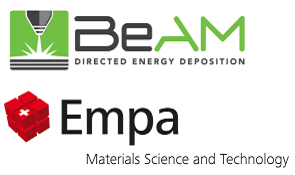 BeAM, recently acquired by AddUp, has signed a research and development agreement with Empa, the Swiss Federal Laboratories for Materials Science and Technology. Together, the two will develop novel applications for BeAM’s powder-based Directed Energy Deposition (DED) technology, which uses focused thermal energy to fuse materials by melting them while they’re deposited. This makes parts manufacturing much faster. The partnership has come on the heels of Empa’s acquisition of a BeAM DED 3D printer, which is located at its Laboratory for Advanced Materials Processing in Thun and is used to integrate and test out innovative components.
BeAM, recently acquired by AddUp, has signed a research and development agreement with Empa, the Swiss Federal Laboratories for Materials Science and Technology. Together, the two will develop novel applications for BeAM’s powder-based Directed Energy Deposition (DED) technology, which uses focused thermal energy to fuse materials by melting them while they’re deposited. This makes parts manufacturing much faster. The partnership has come on the heels of Empa’s acquisition of a BeAM DED 3D printer, which is located at its Laboratory for Advanced Materials Processing in Thun and is used to integrate and test out innovative components.
Patrik Hoffmann, who leads the laboratory, said, “We are very excited to collaborate with BeAM’s engineers to push the boundaries of this innovative additive manufacturing technology and to develop a whole new range of applications for Swiss industries and beyond.”
Sculpteo 3D Printing Apartment Models
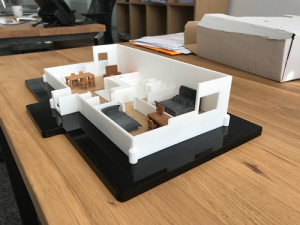 Together with Sculpteo, French property developer Valoptim is working to improve customer experience by providing clients with miniaturized 3D printed models of their future apartments when they sign their contracts, so they can better visualize and prepare for moving into their new home. These small, exact replicas give new owners an immersive experience, which is a definite value add. In addition, production of the 3D printed models is local, and can be done fast.
Together with Sculpteo, French property developer Valoptim is working to improve customer experience by providing clients with miniaturized 3D printed models of their future apartments when they sign their contracts, so they can better visualize and prepare for moving into their new home. These small, exact replicas give new owners an immersive experience, which is a definite value add. In addition, production of the 3D printed models is local, and can be done fast.
“Sculpteo uses the best machines and 3D printing processes on the market today. At first, we had the ambition to test the feasibility of 3D printing in the real estate sector. This innovative process has proven to be extremely interesting: the realistic rendering, with high-end finishes, allowed our clients to discover a miniaturized version of their future apartment enabling them to realistically imagine themselves living in it,” said Edouard Pellerin, CEO of Valoptim. “This innovation contributes to our business dynamic: constantly improving the customer experience.”
VSHAPER and Grupa Mac Sign Agreement
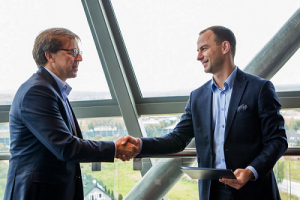 Polish 3D printer manufacturer Verashape has signed an agreement with Grupa MAC, the country’s top educational publisher, in front of Poland’s education curators at the recent Future of Education Congress. Per the agreement, Grupa MAC will use a network of educational consultants to distribute the VSHAPER GO 3D printers to kindergartens and other schools in the country. Grupa MAC recognizes that 3D printers are a good way to quickly present the effects of students’ learning, and the VSHAPER GO is the perfect choice, as it is easy to use and comes with an intuitive interface of SOFTSHAPER software.
Polish 3D printer manufacturer Verashape has signed an agreement with Grupa MAC, the country’s top educational publisher, in front of Poland’s education curators at the recent Future of Education Congress. Per the agreement, Grupa MAC will use a network of educational consultants to distribute the VSHAPER GO 3D printers to kindergartens and other schools in the country. Grupa MAC recognizes that 3D printers are a good way to quickly present the effects of students’ learning, and the VSHAPER GO is the perfect choice, as it is easy to use and comes with an intuitive interface of SOFTSHAPER software.
“Classes with students are a perfect environment for the use of 3D Printing. Creating a pyramid model for history lessons, the structure of a flower or a human body for biology lessons are just a few examples, and their list is limited only by the imagination of students and teachers,” said Patryk Tomczyk, a member of the Grupa MAC Management Board. “We are happy that thanks to our cooperation with VERASHAPE, 3D Printers have a chance to reach schools through our network of educational consultants.”
3D Printing to be Introduced in UAE Primary Schools
 Speaking of 3D printing in education, the Ministry of Education (MoE) for the UAE has announced that in early 2019, a country-wide introduction of 3D printing into over 200 primary schools will commence. As part of this new technology roll out, Dubai education consultancy company Ibtikar is partnering with Makers Empire, an Australian education technology company, to deliver a program that implements 3D printing and design. Makers Empire will supply 3D software, curriculum, teacher resources, training, and support to Ibtikar, which will in turn train MoE teachers to deliver the program.
Speaking of 3D printing in education, the Ministry of Education (MoE) for the UAE has announced that in early 2019, a country-wide introduction of 3D printing into over 200 primary schools will commence. As part of this new technology roll out, Dubai education consultancy company Ibtikar is partnering with Makers Empire, an Australian education technology company, to deliver a program that implements 3D printing and design. Makers Empire will supply 3D software, curriculum, teacher resources, training, and support to Ibtikar, which will in turn train MoE teachers to deliver the program.
“Through this rollout of 3D technology, our students will learn to reframe needs as actionable statements and to create solutions to real-world problems,” said HE Eng. Abdul Rahman of the United Arab Emirates Ministry of Education. “In doing so, our students will develop an important growth mindset, the skills they need to make their world better and the essential ability to persist when encountering setbacks.”
US Navy Approves Test of First 3D Printed Shipboard Part
The US military has long explored the use of 3D printing to lower costs and increase the availability of spare parts. Huntington Ingalls Industries, the largest military shipbuilder in the US, has also been piloting new technologies, like 3D printing, as part of its digital transformation. In collaboration with the US Navy, the company’s Newport News Shipbuilding division has worked to speed the adoption of 3D printed metal components for nuclear-powered warships. This has led to an exciting announcement by the Naval Sea Systems Command (NAVSEA): a metal drain strainer orifice (DSO) prototype has officially been approved as the first 3D printed metal part to be installed on a US Navy ship. The assembly is a component for the steam system, which allows for drainage and removal of water from a steam line while in use. The 3D printed DSO prototype will be installed on the USS Harry S. Truman in 2019 for evaluation and tests. After one year, the assembly will be removed for inspection and analysis.
“This install marks a significant advancement in the Navy’s ability to make parts on demand and combine NAVSEA’s strategic goal of on-time delivery of ships and submarines while maintaining a culture of affordability. By targeting CVN 75 [USS Harry S. Truman], this allows us to get test results faster, so-if successful-we can identify additional uses of additive manufacturing for the fleet,” said Rear Adm. Lorin Selby, NAVSEA Chief Engineer and Deputy Commander for Ship Design, Integration, and Naval Engineering.
Lufthansa Technik Opens New Additive Manufacturing Center
 Lufthansa Technik, a leading provider of maintenance, repair and overhaul (MRO) for civil aircraft, has established a new Additive Manufacturing Center. The goal of the new AM Center is to bundle and expand the company’s experience and competence with the technology, which can be used to make individual parts more quickly and with more design freedom. As the world of aircraft is always aware of weight, making more lightweight parts is an excellent benefit of 3D printing.
Lufthansa Technik, a leading provider of maintenance, repair and overhaul (MRO) for civil aircraft, has established a new Additive Manufacturing Center. The goal of the new AM Center is to bundle and expand the company’s experience and competence with the technology, which can be used to make individual parts more quickly and with more design freedom. As the world of aircraft is always aware of weight, making more lightweight parts is an excellent benefit of 3D printing.
“The new AM Center will serve as a collaborative hub where the experience and skills that Lufthansa Technik has gained in additive manufacturing can be bundled and further expanded,” said Dr. Aenne Koester, the head of the new AM Center. “The aim is to increase the degree of maturity of the technologies and to develop products that are suitable for production.”
Tom’s 3D Visits Prusa Headquarters
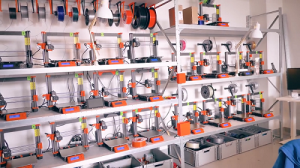 Maker Thomas Sanladerer, who runs his own YouTube channel, recently had the chance to tour the Prusa Research headquarters in Prague. Not only did he get the opportunity to see how the company makes its popular MK3 and and MK2.5, but Sanladerer was also able to see early models of the company’s recently announced SL1 resin 3D printer, as well as the Prusament filament production line.
Maker Thomas Sanladerer, who runs his own YouTube channel, recently had the chance to tour the Prusa Research headquarters in Prague. Not only did he get the opportunity to see how the company makes its popular MK3 and and MK2.5, but Sanladerer was also able to see early models of the company’s recently announced SL1 resin 3D printer, as well as the Prusament filament production line.
“I always find factory tours like this super interesting because it’s the only chance you really get of seeing behind the scenes of what might really just be a website, or you know, a marketing video or whatever,” Sanladerer said in his video.
Sanladerer took the tour of the Prusa factory right after Maker Faire Prague, which the company itself organized and sponsored. To see behind the scenes of Prusa for yourself, check out the rest of the video below:
Discuss these stories and other 3D printing topics at 3DPrintBoard.com or share your thoughts below.
Will GEFERTEC’s 3DMP Metal 3D Printing Process Make 3D Printing Large Metal Structures Affordable?
German company GEFERTEC’s 3DMP process is a very interesting metal 3D printing technology. We profiled the company and its wire fed 3D printing technology a few months ago. Rather than focus on inexpensive parts (inkjet) or fine mechanical small parts (DMLS, SLM) their wire arc based technology is focused on large 3D printed metal parts. How large? Well, how about 1 meter or five-meter parts made out of various metals? What’s more, the industrial firm is committed to making its process affordable by opening up the process to let people use traditional low-cost wire arc feedstock. By positioning the technology in this way the company is trailblazing into the construction of airframes, wing spars and large structural components in aircraft.
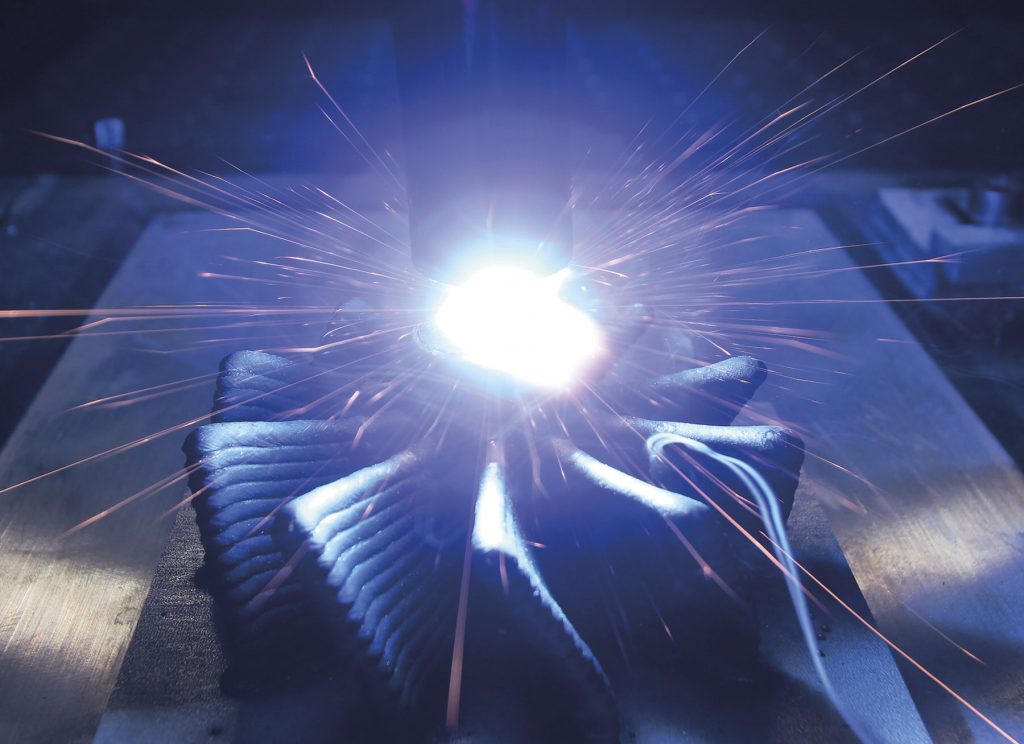
Welding based technologies such as Trumpf’s, Sciaky‘s and Optomec as well as the various other Directed Energy Deposition technologies are much less well known than DMLS/SLM/LPBF powder bed fusion technologies. Developed during the cold war they were extensively used on the Shuttle and other space programs before people decided to do something brilliant and make a wire arc or other welding technology go up a layer. They often are used for defense-related applications such as satellite, missile or experimental aircraft structural components. Indeed a number of these technologies were specifically developed for such defense applications.
At the moment aerospace companies are very publicly focusing on tiny components. This means that they can gain from the advantages of 3D printing with these small components quickly while qualifying technologies. In my mind, the huge leap in design capabilities will also happen once full airframes, rockets, warheads and other large several meters in size components are qualified for aviation. At the moment this is being done on the down-low but the move towards civil aviation is happening behind the scenes. We now can see the market split into three in what I’ve termed the Goldilocks Moment. Essentially we’re seeing distinct segments in low cost, fine mechanical and large metal printing technologies emerge. One of the companies vying for a prize of the large-scale printing of metal parts for aerospace and other applications is the German firm GEFERTEC. We asked Tobias Röhrich the CEO of GEFERTEC to tell us about his firm and the 3DMP technology.
What is 3DMP? What kind of parts are ideal for the technology?
“3DMP stands for 3D Metal Print. It is the most economic additive manufacturing process for big metal part based on wire and arc. There are a lot of different interesting application scenarios for 3DMP. Once the parts must be made from metal, 3DMP is an economically and technically viable option for parts of a certain size, which are expensive or difficult to manufacture with conventional methods. In case you are looking at substituting milling it is of interest when expensive or difficult to machine materials are being processed. Especially when you look at parts with high cutting volume. 3DMP can be also an economically and logistically alternative to casting or forging in particular in case of low quantity lots, where you could save on the tooling cost and gain delivery time advantages.
“Furthermore, there is a list of functional and structural benefits of parts made by 3DMP that would be unthinkable using conventional methods. It is possible to generate inner structures like closed hollow parts, cooling channels etc.. For many applications for example in tool manufacturing, it is of great interest of combining different material layers in one part, like having a mild steel body and a hardfacing on top.”
What sizes can you print parts?
“3DMP, especially comparing with laser and powder, is a very economical 3D printing process for bigger parts. The maximum size of the built structure reaches in the standard machines almost 3m³. Besides that the process is scalable, meaning it is technically possible and economically viable to use 3DMP for even bigger parts. In a joint effort, GEFERTEC and AIRBUS are driving a project looking at the possibility of printing titanium parts of 7 to 8 m size.”
What materials are possible?
“Basically, you can use all of the conventional welding wire usable for this process, whereby one has to say that there are materials that are easier to handle and there are those with special challenges. We already control the process for about 30 different metals, amongst them tooling steels, stainless steels, high alloy steels, nickel-based alloys, titanium, copper based alloys, different aluminum alloys and many more.”
How are you positioning the technology vis a vis DMLS and DED?
“If you compare the different printing methods it is notable that there are different properties and applications coming along with them. 3DMP is an economical, easy to handle and robust technology for printing of big metal parts. Instead of powder and laser, 3DMP uses the wire and the arc. This has consequently a lot of advantages comparing it. One is the build rate, that compared with for example the DMLS is about 10-15 times higher. Another advantage is the easy handling of the wire instead of the complexities one has to deal with using metal powder. Furthermore, the wire is significantly less costly, there is a great variety of proven and certified materials available in the market for a technology that has essentially been used for about a 100 years.”
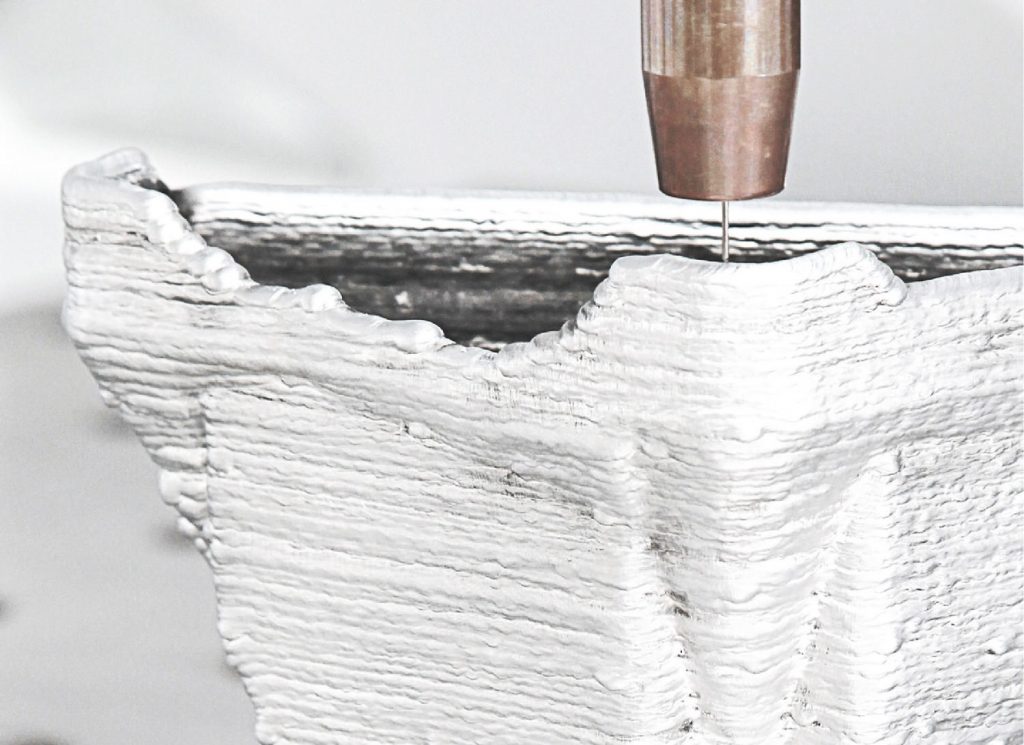
Is using wire feedstock cheaper than using powder?
“Yes. Using wire is significantly cheaper than using powder. Having said that, it is also more efficient. Meaning with a wire you have almost a 100% of a material to part conversion. Using powder you, unfortunately, have a significant percentage of lost material.”
What kind of surface roughnesses can you achieve? Densities?
“The aim of 3DMP is to produce near net shape parts which will be milled afterwards. There will always be kind of a wavy surface due to the welding beads. The best you can achieve is about 0,3mm roughness, but again the purpose is not to produce finished parts. You have to mill afterwards and therefore it doesn´t matter to much if you have 0,3 mm or 1mm as roughness. Most of DMLS and DED parts need the milling as a finishing process as well, even though the reachable roughness would be finer. The relative density is 100%.”
What are the part costs when compared to inkjet metal, DED and DMLS? “This depends on the part, its geometry and its size. Generally speaking, the build rate, which is a big factor of the cost, is compared to DMLS 10 – 15 times higher. Big parts are not economically built up with DMLS, but are with 3DMP.”
What does a machine cost?
“Machine cost varies between 300 and 750 thousand Euro.”
Who are your target customers?
“We are targetting job shops, aerospace companies, the shipbuilding industry, the power plant industry, general machine builders and many more verticals.”

